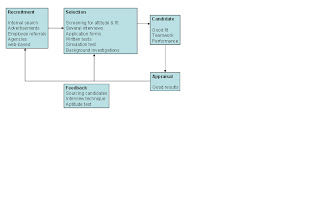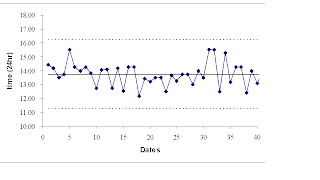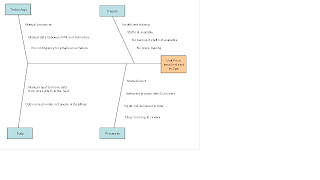My Linkedin profile: au.linkedin.com/in/davidxbarton/
28/1
- Australia ranks as second best place to be born in 2013 http://www.economist.com/news/21566430-where-be-born-2013-lottery-life?fsrc=scn/ln_ec/the_lottery_of_life
20/1
- She notes that while double-entry bookkeeping has long been a recorder of
business growth, it has been oblivious to many of the intangibles people value
most, such as good human relationships and a clean environment. http://knowledge.asb.unsw.edu.au/article.cfm?articleId=1687
18/1
- Becoming more strategic: Three tips for any executive https://www.mckinseyquarterly.com/Strategy/Strategy_in_Practice/Becoming_more_strategic_Three_tips_for_any_executive_2992
14/1
- Will insurance make the difference in MySuper? http://investmentmagazine.com.au/2012/10/will-insurance-make-the-difference-in-mysuper/
11/1
– LGS tops climate risk survey - http://www.top1000funds.com/news/2013/01/09/fund-heads-in-sand-on-climate-risk/
10/1 - A great initiative but still a long way from
implementation Integrated reporting seeks to add the five other types of capital
to the current financial reporting of a business:
-
Manufactured capital accounts
- Natural capital
- Human capital
- Intellectual capital.
- And, social capital
11/11 – Fiscal cliff
definition http://on.wsj.com/QooOQA
6/11 - Inhouse management isn’t
for everyone - Attracting the right talent and budgetary constraints are cited
as reasons for maintaining external investment management strategy http://www.top1000funds.com/conversation/2012/09/14/in-house-not-for-every-house-wsib/
2/11 - The payoff and penalties of
holding meetings http://www.strategy-business.com/article/re00190?gko=97c84
26/10 – Buzzwords - http://www.smh.com.au/executive-style/management/is-it-time-to-buck-the-buzzword-trend-20121017-27qc1.html
25/10 - The offline executive http://www.strategy-business.com/article/00121?gko=c4c55&cid=20120717enews The more often someone feels compelled to
check their e-mail or phone, the harder it is to focus on the task at hand.
28/9 - 8 secrets of success http://www.stumbleupon.com/su/3mlXyJ/:vf8xy9eN:KFd8DFnO/www.ted.com/talks/richard_st_john_s_8_secrets_of_success.html/ - work-a-frolics
25/9 - How to Memorize Verbatim
Text
http://www.stumbleupon.com/su/2FwO7Q/:12AJgeNN6:KGWsZO26/www.productivity501.com/how-to-memorize-verbatim-text/294/
12/9 - http://www.top1000funds.com/conversation/2012/08/24/merton-the-individual-plan-man/ the argument for SMA’s “Merton, who among other things was a
co-founder of Long Term Capital Management, says these solutions have to be
customised for every individual – to be individually managed accounts.”
7/9 - http://www.economist.com/blogs/graphicdetail/2012/07/daily-chart?fsrc=scn/fb/wl/dc/abrokenrecord
6/9 - Understanding the lunch
break Lunchtime
Legends: The Ins and Outs of Workday Breaks -...knowledge.asb.unsw.edu.au Published: September 04, 2012 in
Knowledge@Australian School of Business "I usually eat in front of my
monitor because everyone else does and I would feel like a slacker going out to
eat for a half an hour or an hour to recharge.
22/8 - Why work does not have to
be fulfilling http://www.forbes.com/sites/actiontrumpseverything/2012/06/19/why-work-does-not-have-to-be-fulfilling/
6/8 - Tools to make great Infographics http://www.stumbleupon.com/su/1xSQF9/www.socialable.co.uk/16-tools-to-make-awesome-infographics/
27/7 - Warren Buffett Book http://www.fourhourworkweek.com/blog/2012/06/11/exclusive-warren-buffett-a-few-lessons-for-investors-and-managers/?utm_source=feedburner&utm_medium=email&utm_campaign=Feed%3A+timferriss+%28The+Blog+of+Author+Tim+Ferriss%29
25/7 http://blogs.wsj.com/economics/2012/07/20/u-s-cities-with-bigger-economies-than-entire-countries/tab/interactive/ - Crazy that Bob Carr can say the American
economy is in decline when Australia's GDP is only slightly higher that that of
NYC
20/7 Competing through data: Three
experts offer their game plans - https://www.mckinseyquarterly.com/Marketing/Digital_Marketing/Competing_through_data_Three_experts_offer_their_game_plans_2868
25/6 Top Teams Span of Control http://www.strategy-business.com/article/00107?gko=ce37c&cid=20120410enews
20/6 Equities Obsession: Too Much
of a Good Thing? http://knowledge.asb.unsw.edu.au/article.cfm?articleId=1558
27/4 -The Art of Influence http://www.stumbleupon.com/su/2Zwp9S/:1Fd-.5r!d:KCoXNWsV/www.psychologytoday.com/print/73451?page=3/
17/4 - ESG linked to exec
renumeration http://www.top1000funds.com/news/2012/03/23/esg-almost-an-afterthought/
10/4 Why External Hires Get Paid
More, and Perform Worse, than Internal Staff - http://knowledge.asb.unsw.edu.au/article.cfm?articleId=1566 or is it that the expectations are higher?
3/4 - Strategy, an executives
definition http://www.strategy-business.com/article/cs00002?gko=d59c2&cid=20120306enews
30/3 - Will be interesting to see
the results of this survey on on asset owners are managing climate change risk
exposure across their respective portfolios. http://www.top1000funds.com/news/2012/02/08/climate-risk-disclosure-project-goes-global/
29/3 - Meetings: http://www.smh.com.au/small-business/blogs/work-in-progress/group-work-helpful-or-just-monkey-business-20120202-1qvxj.html
12/3
- 9 oddest interview questions - http://mashable.com/2011/12/27/glassdoor-interview-questions-2011/
14/2
- Finding the courage to shrink - https://www.mckinseyquarterly.com/Corporate_Finance/Performance/Finding_the_courage_to_shrink_2854
6/2
- CIOS do you get what you pay for, interesting although this doesn’t take into
account differences in investment style
-
http://www.top1000funds.com/news/2012/01/27/do-you-get-what-you-pay-for/
31/1
- How social technologies are extending the organization https://www.mckinseyquarterly.com/High_Tech/Strategy_Analysis/How_social_technologies_are_extending_the_organization_2888
20/1
- How the role of equities may shrink - https://www.mckinseyquarterly.com/Economic_Studies/Country_Reports/How_the_role_of_equities_may_shrink_2898
12/1
- Worthwhile if you’re looking to increase your productivity in 2012 - http://mashable.com/2011/12/28/email-infographic-toutapp/
9/1 - Resetting the cost structure
- http://www.strategy-business.com/article/11402?gko=bf63b&cid=20111213enews
4/1 - The efficiency conundrum - http://www.economist.com/node/21538771?fsrc=scn/fb/wl/ar/theefficiencyconundrum
28/12/11 - Have you tested your strategy
lately? - https://www.mckinseyquarterly.com/Strategy/Strategic_Thinking/Have_you_tested_your_strategy_lately_2711
21/12/11 - Mapping Migration -
http://www.economist.com/blogs/dailychart/2011/11/diasporas?fsrc=scn/fb/wl/mt/mappingmigration
18/12/11 - Global cities of the
future: An interactive map - https://www.mckinseyquarterly.com/Economic_Studies/Productivity_Performance/Cities_the_next_frontier_for_global_growth_2758
14/12/11 - Revealed the worst
passwords of 2011 - http://www.smh.com.au/technology/security/revealed-the-worst-passwords-of-2011-20111121-1npr1.html
29/11/11 - Do Newspaper Articles
Predict Aggregate Stock Returns?
http://papers.ssrn.com/sol3/papers.cfm?abstract_id=1959916
22/11/11 - The effect of ageing on
asset prices may make the rich world’s problems worse - http:///www.economist.com/node/21530077?fsrc=scn/fb/wl/ar/bringingdownthehouse
15/11/11 - 99 interview tips that
will actually help you get a job - http://www.stumbleupon.com/su/2ekOgq/passivepanda.com/interview-tips
14/11/11 - Measuring the value of
search - https://www.mckinseyquarterly.com/Marketing/Digital_Marketing/Measuring_the_value_of_search_2848
3/11/11 - 10 Killer Apps for the Coworking
Professional - http://mashable.com/2011/09/06/coworking-apps/#236051-Cobot
15/10/11 - 5 Social Media Tips for Scoring
Your Next Job - http://mashable.com/2011/09/01/social-media-job-search/
6/10/11 - LinkedIn Explores What It Takes To
Be an Entrepreneur [INFOGRAPHIC] - http://mashable.com/2011/09/01/startup-founder-linkedin/
30/9/11 - Daniel Goleman’s Emotional
Intelligence: valuable to review this again from time to time - http://www.stumbleupon.com/su/9QxCls/www.mindtools.com/pages/article/newCDV_59.htm
25/9/11 - Eat Your Peas: A Recipe for
Culture Change - The methods used by celebrity chef Jamie Oliver to promote
health in a West Virginia city can also be used to raise organizational
performance. - http://www.strategy-business.com/article/11205?pg=0
12/9/11 - How Much Data Will Humans Create
& Store This Year? [INFOGRAPHIC] - http://mashable.com/2011/06/28/data-infographic/
9/9/11 - Effectively managing service
operations - Effectively managing service operations is crucial to controlling
labour costs and improving customer satisfaction. -
http://www.strategy-business.com/article/00072?gko=ce4b4
2/9/11 - Distortions and deceptions
in strategic decisions -Companies are vulnerable to misconceptions, biases, and
plain old lies. But not hopelessly vulnerable.https://www.mckinseyquarterly.com/Strategy/Strategic_Thinking/Distortions_and_deceptions_in_strategic_decisions_1716
26/8/11 - How to Win Friends and
Influence People: This is Dale Carnegie's summary of his book, from 1936 -
http://www.stumbleupon.com/su/2ClSXT/www.westegg.com/unmaintained/carnegie/win-friends.html
22/8/11 - 14 ways to create a
memorable business card- http://mashable.com/2011/07/23/business-card-designs/
12/8/11 Seven steps to better
brainstorming - Most attempts at
brainstorming are doomed. To generate better ideas—and boost the odds that your
organization will act on them—start by asking better questions. - https://www.mckinseyquarterly.com/Strategy/Strategy_in_Practice/Seven_steps_to_better_brainstorming_2767
28/7/11 The Rise of Generation C - http://www.strategy-business.com/article/11110?gko=64e54&cid=20110222enews
19/6/11 The "Nonplussed" Problem - How long should we cling
to a word's original meaning? - http://www.slate.com/id/2290536/
10/4/11 “That’s the Way We (Used to) Do Things Around
Here” - http://www.strategy-business.com/article/11109?gko=8928a&cid=20110301enews






